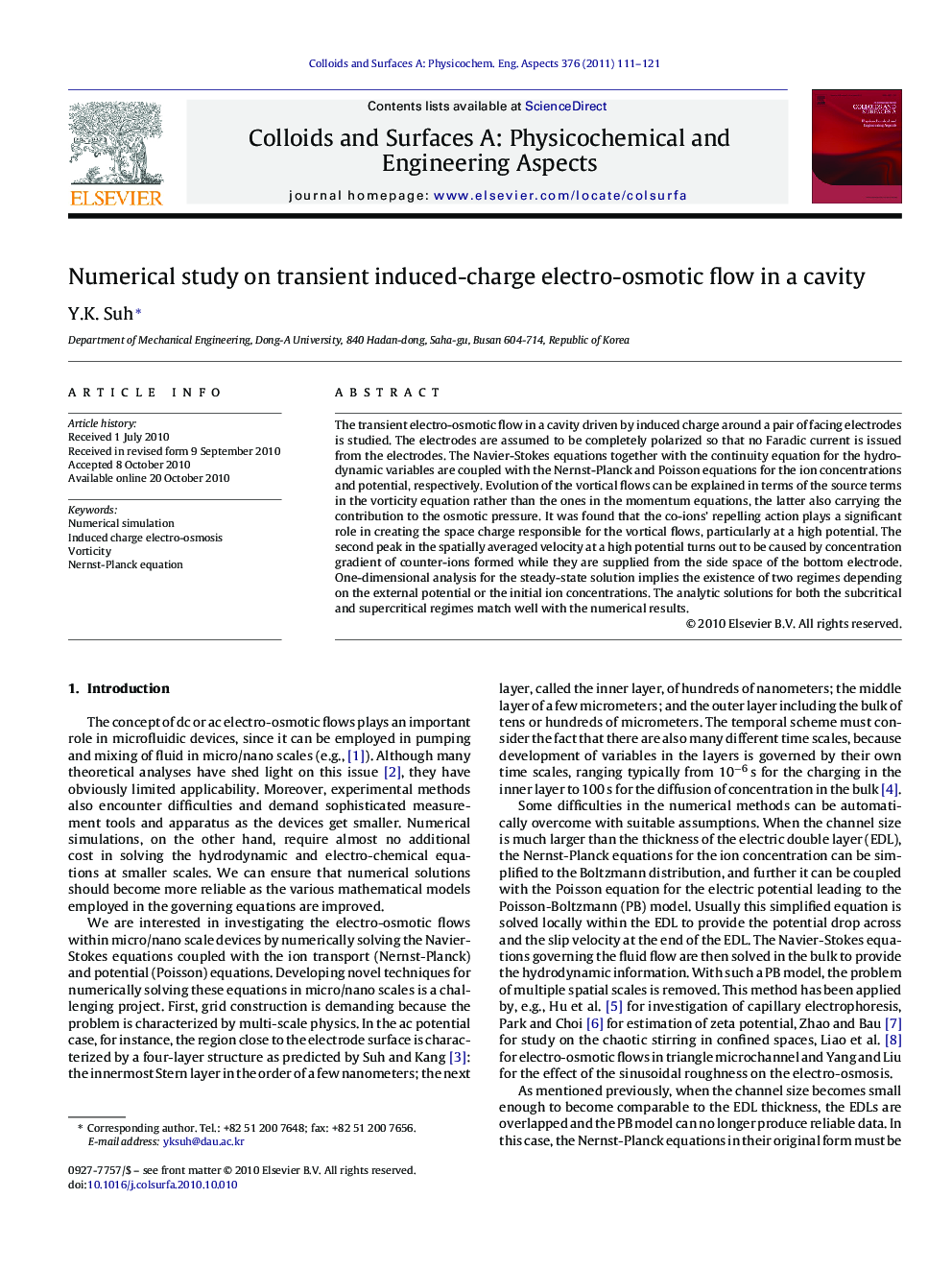| Article ID | Journal | Published Year | Pages | File Type |
|---|---|---|---|---|
| 595041 | Colloids and Surfaces A: Physicochemical and Engineering Aspects | 2011 | 11 Pages |
Abstract
The transient electro-osmotic flow in a cavity driven by induced charge around a pair of facing electrodes is studied. The electrodes are assumed to be completely polarized so that no Faradic current is issued from the electrodes. The Navier-Stokes equations together with the continuity equation for the hydrodynamic variables are coupled with the Nernst-Planck and Poisson equations for the ion concentrations and potential, respectively. Evolution of the vortical flows can be explained in terms of the source terms in the vorticity equation rather than the ones in the momentum equations, the latter also carrying the contribution to the osmotic pressure. It was found that the co-ions' repelling action plays a significant role in creating the space charge responsible for the vortical flows, particularly at a high potential. The second peak in the spatially averaged velocity at a high potential turns out to be caused by concentration gradient of counter-ions formed while they are supplied from the side space of the bottom electrode. One-dimensional analysis for the steady-state solution implies the existence of two regimes depending on the external potential or the initial ion concentrations. The analytic solutions for both the subcritical and supercritical regimes match well with the numerical results.
Related Topics
Physical Sciences and Engineering
Chemical Engineering
Colloid and Surface Chemistry
Authors
Y.K. Suh,
